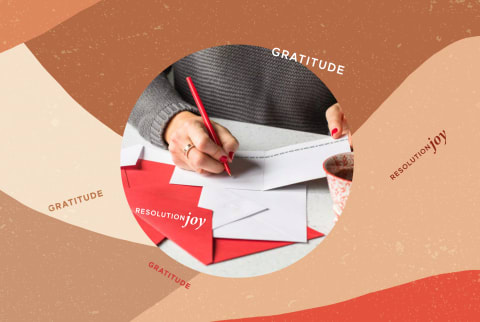When we strive to practice gratitude, it’s often viewed from an internal lens. Whether it’s through journaling or meditation, these feelings of appreciation have been shown to boost overall well-being1 and may even relieve stress2. While self-expressions of gratitude are essential, extending that gratitude to others can also go a long way. With nearly a year of isolation behind us and a continued call for social distancing in 2021, finding ways to show support for others remains critical. This year, as a way to cultivate joy in your own life and the lives of those around you, turn your gratitude into action. Here are a few ways you can start: Think about the times you’ve received an unexpected piece of snail mail. You probably felt special and acknowledged, right? Well, allow someone else to experience that feeling, too. Start by spending a few minutes reflecting on people you feel especially grateful for—your mom, your best friend, your partner, or your mail carrier—whoever comes to mind. Then, spend a few more minutes reflecting on the ways in which they’ve provided you support or made a difference in your life. Finally, express those thoughts in the letter. Research shows writing affectionate letters can actually lower cholesterol, making the benefits of this practice threefold. On the one hand, you’re cultivating gratitude. On the other, you’re making someone feel loved. And finally, you’re supporting your heart health. If you need more guidance, here is a step-by-step guide for writing a love letter. According to research from Gary Chapman, Ph.D., one of the most common love languages is words of affirmation. For those people, verbally expressing your gratitude by saying “thank you. You mean a lot to me. I feel so loved by you,” etc., will likely mean more than a gift would. For others, whose love language is quality time, planning a day together would be a special way to say “thanks for all you do.” According to intimacy expert Julian Colker, the bear hug helps activate the parasympathetic nervous system, making someone feel less stressed. “This type of hug is so satiating on a physical, human level,” relationship and intimacy consultant Marla Mattenson previously told mbg. Engaging in this type of physical and emotional closeness is a subtle way to express your gratitude without actually saying thanks. What does listening have to do with gratitude? Well, by creating an environment for someone to feel safe enough to speak, and trust that they’re being heard, you’re showing them you care. You’re showing them that you appreciate who they are and what they have to say.



